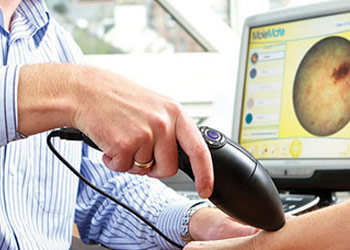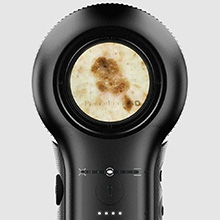We Take a Closer Look
The difference between a detailed skin cancer screening process and a basic examination can literally be life or death.
Spotscreen’s uses only the most current and advanced screening technology to accurately review moles and spots for early signs of skin cancer.
This means you have access to one of the most detailed onsite screening processes available.
Spotscreen continually invests in the best technologies available to ensure that participants receive a best practice screening process designed to detect skin cancers in their earliest stages.


How Does It Work?
Through a combination of advanced dermoscopy technologies (Dermlite Lumio 2, Dermlite DL5 and/or SIAscope), our Practitioners deliver a comprehensive full-body skin check, with highly detailed analysis of any suspicious spots.
The state-of-the-art Dermlite DL5’s, allow for 10x magnification and a variable polarisation system, meaning our Practitioners can see deeper into the spot, visualising its extremely superficial structures which helps increase skin cancer early detection rates.
Where our SIAscope technology (with MoleMate software) is used, we can inspect up to 2mm underneath the skin, providing a greater level of understanding of what is happening underneath the mole (like the iceberg analogy) rather than what is only visible on the surface.
For any suspicious pigmented lesion, the SIAscope is pressed up against the lesion and a safe light is emitted, which passes through the different layers of skin and subsequently produces detailed images – displayed through the innovative MoleMate analytics system.
Examples of images produced during a Spotscreen SIAscope mole scan:

Proof is in the Results
The technology has been evaluated in three clinical trials which has seen more than 1500 patients assessed with the system.
In a substantial UK primary care trial, the rate of Sensitivity (True Positives) and Specificity (True Negatives) were an amazing 94% and 83% respectively.
This compared very favourably to benchmark rates from General Practitioners using conventional techniques as results showed the rate of Sensitivity (True Positives) being 67% and Specificity (True Negatives) at 76%.
Sensitivity
- MoleMate
- Clinical assessment alone
Specificity
- MoleMate
- Clinical assessment alone
